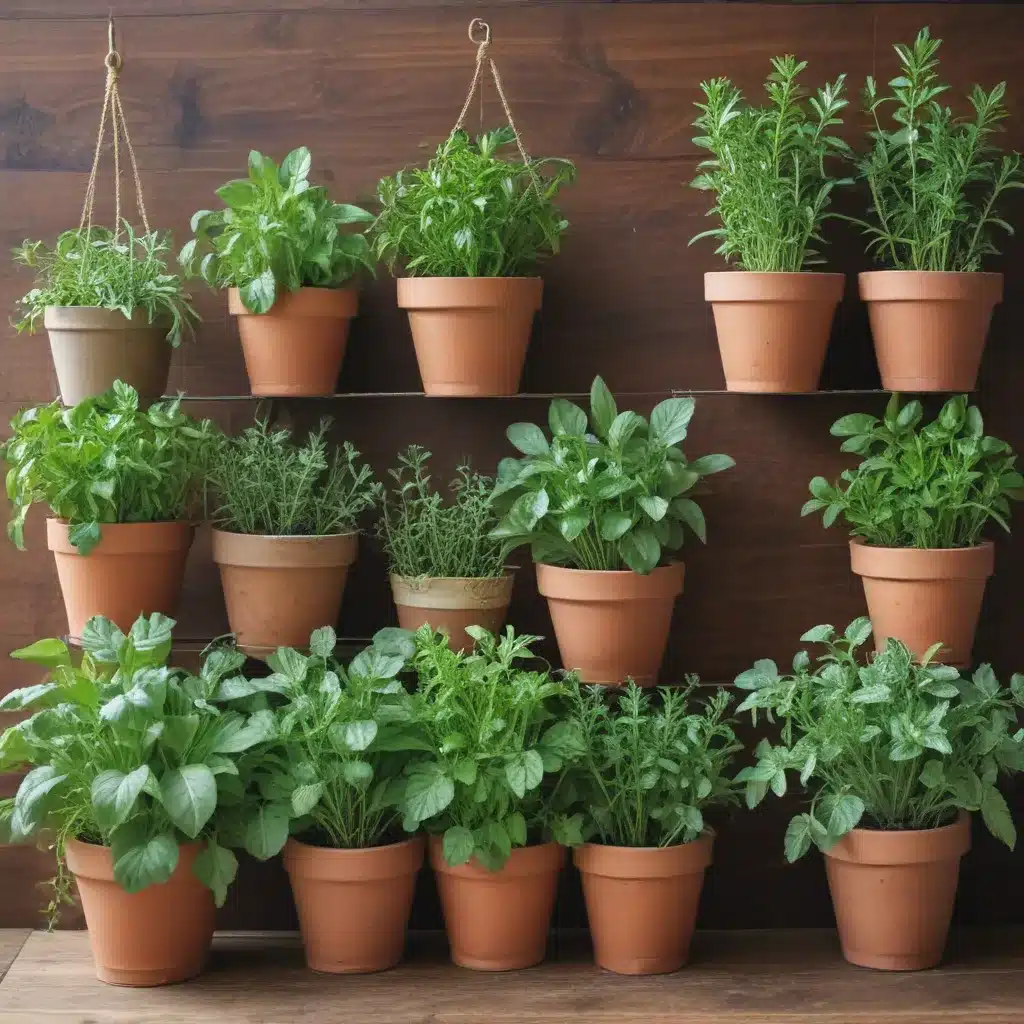
Unlock the Flavors of Homegrown Herbs
Imagine stepping out your back door, basket in hand, and snipping a few sprigs of fragrant rosemary or handfuls of vibrant basil leaves to toss into your cooking. The aromas wafting from your kitchen would be simply divine, and the fresh flavor would elevate your meals to new heights. This dream can be a reality when you grow your own culinary herbs!
As a gardener and home chef, I’ve fallen head over heels for the joys of cultivating these flavorful plants. Let me share with you my passion for growing herbs and how you can easily incorporate their fresh goodness into your cooking.
The Nutritional Powerhouses of the Garden
You may already know that vegetables are essential for a healthy diet, providing vital vitamins, minerals, and fiber. But did you know that herbs are also nutritional powerhouses? According to Dr. Michael Greger, founder of NutritionFacts.org, “ounce for ounce, herbs and spices have more antioxidants than any other food group.”
These fragrant plants are packed with vitamins A, C, and K, as well as important minerals like iron, potassium, and calcium. And they contain polyphenols, plant compounds that have antioxidant and anti-inflammatory properties to protect against disease. It’s no wonder herbs are often referred to as “superfoods”!
I used to think of herbs as merely a garnish, adding a splash of color to my plates. But once I learned about their impressive nutritional profile, I started incorporating them into my meals in all sorts of creative ways. Now, I can’t imagine cooking without the fresh, vibrant flavors of homegrown herbs.
An Easy and Rewarding Endeavor
Growing your own herbs is incredibly satisfying and surprisingly easy, even for gardening novices. All you need is a sunny spot, whether that’s a raised bed, a few pots on your patio, or even a small windowsill planter.
Many herbs, like rosemary, sage, and thyme, are perennials, meaning they’ll come back year after year with minimal effort on your part. Others, like basil, cilantro, and dill, are annuals that you’ll need to replant each season. But both types are relatively low-maintenance and thrive with just a bit of regular care.
I started with a few potted herbs years ago, and I was amazed by how quickly they grew and how much flavor they added to my cooking. Now, my herb garden is one of the most productive and rewarding areas of my home. Stepping outside to snip a few leaves or sprigs whenever I need them is so convenient and gratifying.
Cooking with Fresh Herbs
When it comes to incorporating herbs into your meals, the possibilities are endless. You can add them to salads, sandwiches, wraps, soups, stews, pasta dishes, and so much more. The key is to use them liberally, both in the cooking process and as a final garnish.
One of my favorite ways to use fresh herbs is to make a quick pesto. Just blend together garlic, olive oil, pine nuts, Parmesan, and a generous amount of basil or other herbs. Toss it with pasta, spread it on toast, or use it as a marinade for proteins. The vibrant, herbaceous flavor is simply divine.
I also love to infuse herbs into liquids, like vinegar or olive oil, to create flavorful dressings, dips, and marinades. And don’t forget about using whole herb leaves as edible garnishes, adding a beautiful pop of color and texture to your dishes.
Preserving the Harvest
One of the best parts about growing your own herbs is that you’ll have an abundant supply throughout the growing season. But what happens when winter rolls around and your plants go dormant?
Fear not! There are plenty of ways to preserve your herb harvest so you can enjoy their fresh flavors all year long. Drying is a simple method – just hang bunches of herbs upside down in a cool, dry place, then crumble the dried leaves into jars. You can also freeze herbs by chopping them and storing them in ice cube trays with a bit of water or olive oil.
Another great option is to make herb-infused oils and vinegars. Simply steep your favorite herbs in high-quality oil or vinegar, then strain and bottle the flavorful liquid. These make wonderful homemade gifts or pantry staples to have on hand.
A Feast for the Senses
As you can probably tell, I’m truly passionate about growing and cooking with herbs. There’s just something so special about the vibrant aromas, the lush textures, and the bold flavors they bring to the table.
Whether you’re a seasoned gardener or a complete newcomer to herb cultivation, I encourage you to give it a try. Start small with a few of your favorite varieties, then expand your herb garden as your confidence and culinary skills grow.
The rewards of growing your own herbs are bountiful – from the meditative joy of tending to your plants to the delicious meals you can create with their fresh goodness. It’s a simple pleasure that I believe every home cook should experience.
So go ahead, step outside, and start snipping! Your taste buds (and your body) will thank you.
















